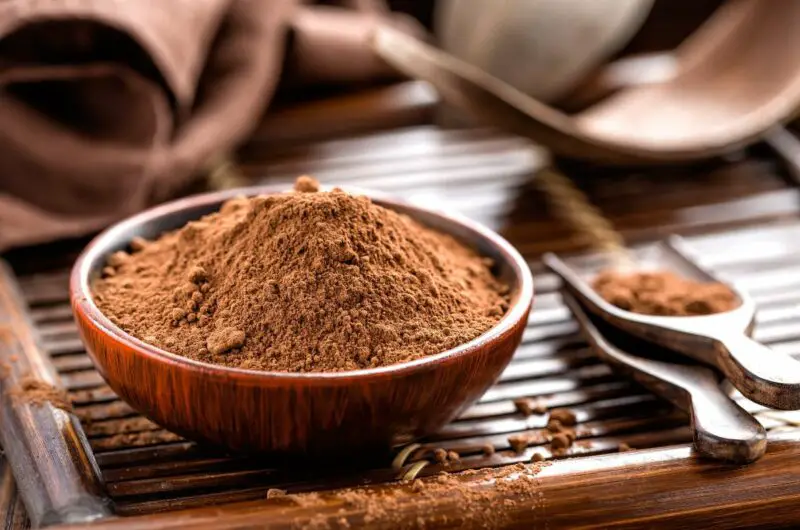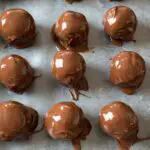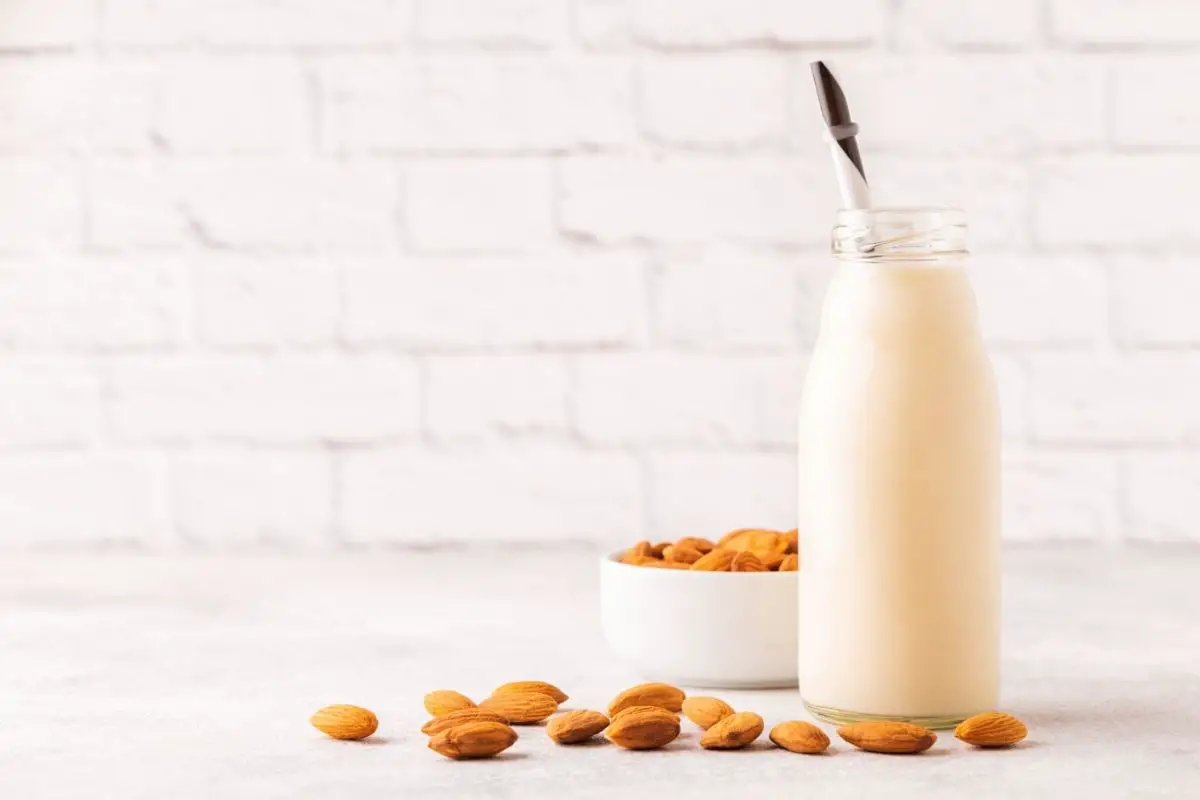It can be quite frustrating when you are ready to make some stylish hot chocolate and you have all the ingredients apart from a single one.
The recipe specifies Dutch-processed cocoa powder and you have little time to head to the store to grab some. Thankfully, it does not have to be Dutch-processed, or actually a cocoa powder, to be a handy substitute.
If you have some other cocoa, carob, or cacao-based products in your pantry then you can use them too. In this guide, we will detail the six most-ideal substitutes for Dutch-processed cocoa powder.

Why Dutch-Processed Cocoa Powder Is Seen In So Many Recipes?
Dutch-processed cocoa powder, also known as alkalized cocoa, European-style cocoa, or Dutched chocolate, may seem like a vital ingredient.
You may see it on the ingredients list for homemade chocolate ice cream or in other chocolate desserts.
It is typically used to provide a dark, rich color and a reduced acidic flavor as it has been created as pH neutral after being treated with an alkali. However, it is not as vital as you may think.
1. Black Cocoa Powder
Taking care of the color of your finished chocolate-based creation should be paramount so you can opt for black cocoa powder.
This substitute has a particularly dark color that comes with an intense flavor and a delicious velvety texture. That is largely why so many bakers opt for it instead of even Dutch-processed cocoa powder.
The profoundly black color is the telltale sign that it has been used instead of another cocoa powder.
It should be prominent when deciding how to substitute any Dutch-processed cocoa powder. There are some precautions to take when using it, mainly around the taste.
Black cocoa powder will have increasingly acidic cocoa butter in it while Dutch-processed cocoa powder should have a mellower taste.
That’s down to how the acids that naturally occur in that cocoa powder have been treated with alkaline.
If you do intend on using black cocoa powder, you will need to add some baking soda to balance out the pH level. That may only be as much as an eighth of a tsp for every three tbsp of cocoa powder you are instructed to use.
2. Cocoa Nibs
If you have some cocoa nibs in your pantry then these too can be used to substitute any Dutch-processed cocoa powder.
These are made from already-crushed cocoa beans and come with a bittersweet taste that may be ideal for your recipe. You would need to grind them up first, as you would with coffee beans before making a cup of Joe.
Try to get the equivalent amount as the recipe states though make sure it is fully ground before dropping it into the mix.
3. Raw Cacao Powder
Instead of grinding cocoa nibs, you could simply opt for raw cacao powder. This still has the taste of cocoa but without any of the added ingredients you can find in some processed alternatives.
The taste should be rich but also smoky with earthy hints and fruity notes so it can be quite complex.
That flavor profile may be off-putting in several simple recipes yet if you wanted to jazz up a chocolate cake then it may prove to be ideal. Raw cacao powder also has a somewhat finer texture than other cocoa powders.
However, when using raw cacao powder as a substitute for Dutch-processed cocoa powder, note that it is increasingly acidic and will taste a bit more bitter.
You may need to level up the pH with some baking soda or consider adding more sugar to sweeten it up.
4. Natural Cocoa Powder Mixed And Baking Soda
While Dutch-processed cocoa powder has been treated to be pH neutral, you would need to bring the pH level back down with various foodstuffs. That includes natural cocoa powder which can be mixed with some baking soda.
Measure out the equivalent amount of natural cocoa powder as the recipe suggests for Dutch-processed cocoa powder and then add some baking soda.
For every three tbsp of natural cocoa powder, add an eighth of a tsp of your baking powder.
By looking out for the pH level of your substitute, you should ensure that natural cocoa powder and baking soda perform just as well as Dutch-processed cocoa powder.
The finished product should be the right consistency yet it may not be the same color. You can expect a lighter brown color with this substitute than if you were using Dutch-processed cocoa powder.
While it may not rectify the color, you can substitute some baking powder with half the amount of baking soda.
5. Natural Baking Chocolate With Added Baking Soda
That leads on nicely to the next substitute for Dutch-processed cocoa powder. Indeed, you can simply substitute it with natural baking chocolate that has been mixed with added baking soda.
For every three tbsp of Dutch-processed cocoa powder in the recipe, replace it with an ounce of natural baking chocolate and an eighth of a tsp of baking soda.
With natural baking chocolate, you can still expect to increase the total fat of your finished product. Try to use this substitute only if you have a low amount of Dutch-processed cocoa powder to replace.
Typically, if the recipe calls for six tablespoons of Dutch-processed cocoa powder then that should be your limit. Remember that by altering the content of fat, you will be changing the fundamental makeup of your recipe.
6. Carob Powder
Similarly to cocoa nibs, carob powder is created by grinding carob pods found in the Middle East, North Africa, and Southern Europe. As a powder, this has a naturally sweet flavor with only subtle notes of chocolate.
The flavor profile does come close to that of Dutch-processed cocoa powder but it does have a finer texture. That will result in a smoother texture for your chocolate-flavored drink like a smoothie but may be helpful for desserts too.
When using carob powder as a direct substitute for Dutch-processed cocoa powder, use the equivalent amount. That’s really helpful as it means you can rely on the makeup of the rest of your recipe.
The taste should be fine too as it has a subtly sweet flavor.
Final Thoughts
Dutch-processed cocoa powder remains a popular ingredient in baking recipes. If you have run out, or simply cannot source it, there are several substitutes that you can make up from what is in your pantry.
Look out for the pH level of your substitute ingredient and consider the finished consistency as well as the flavor profile.
It may be the case that you need to add something as simple as baking powder, baking soda, or simply some more sugar.
Frequently Asked Questions
How Do You Substitute Any Dutch-Processed Cocoa Powder In Recipes That Do Not Require Baking?
Without chocolate, you can swap the Dutch-processed cocoa powder with carob powder to look out for the consistency. You can also use carob powder as a dusting instead of Dutch-processed cocoa powder.
When Was Dutch-Processed Cocoa Powder Invented?
He also wanted a process that allows the cocoa powder to have a darker color and a richer aroma for baking with. When it is compared to other natural forms of cocoa powder, it should have fewer acidic notes too.
The 6 Most-Ideal Substitutes For Dutch-Processed Cocoa Powder
Course: Substitutes4
servings30
minutes40
minutes300
kcalEver wondered what you can use instead of Dutch-processed cocoa powder? Wonder no more as we will detail the six most-ideal substitutes you can use for baking.
Ingredients
Black Cocoa Powder
Cocoa Nibs
Raw Cacao Powder
Natural Cocoa Powder Mixed And Baking Soda
Natural Baking Chocolate With Added Baking Soda
Carob Powder
Directions
- Decide on what substitute you need
- Pick a substitute from the list above
- Read what you need to substitute with
- Create the recipe and enjoy
Recipe Video
https://www.youtube.com/watch?v=fGDUH4ZhXlEVideo can’t be loaded because JavaScript is disabled: Dutch Process Cocoa Powder vs. Natural Cocoa Powder- Kitchen Conundrums with Thomas Joseph (https://www.youtube.com/watch?v=fGDUH4ZhXlE)- What Exactly Do Chickpeas Taste Like? Is There A Distinct Flavor? - September 30, 2023
- Top 11 Low Carb Options at Sonic Drive-In for Keto Diet - September 30, 2023
- What Should You Serve Alongside Potato Salad? 8 Incredible Side Dishes - September 30, 2023











